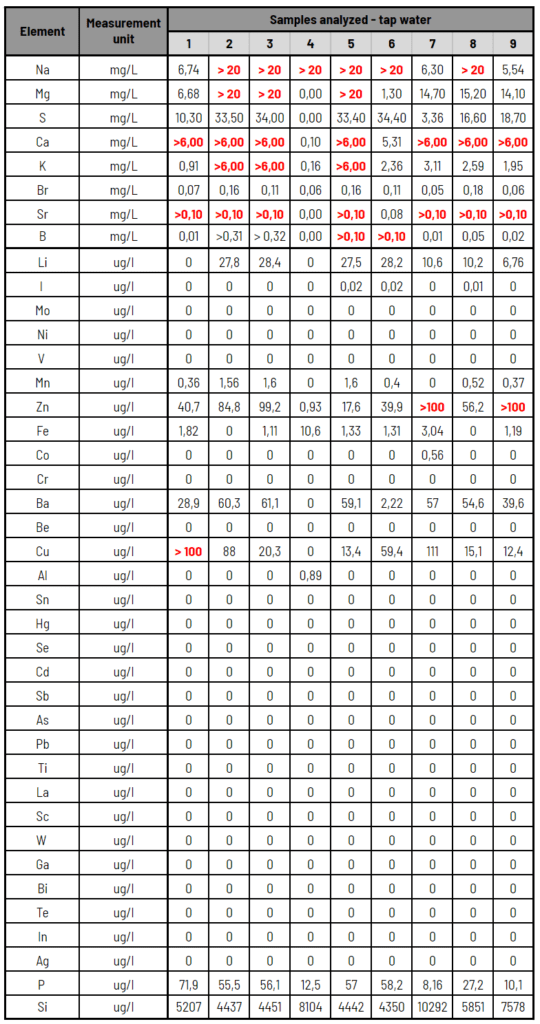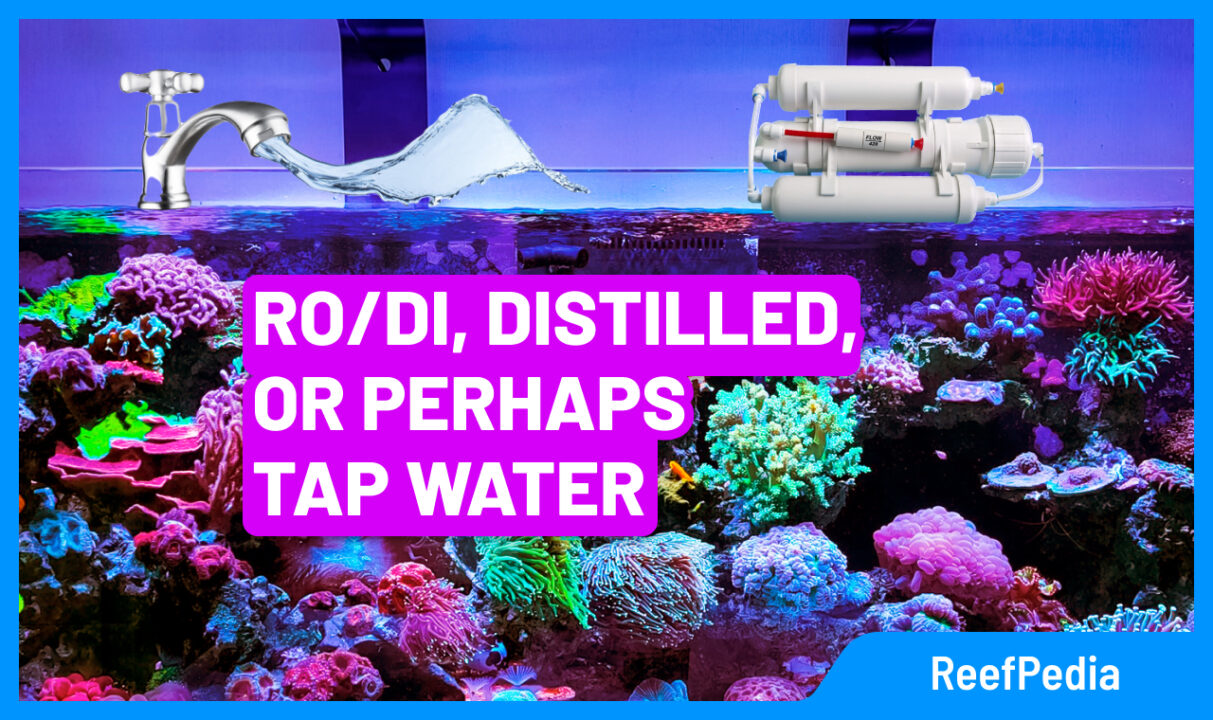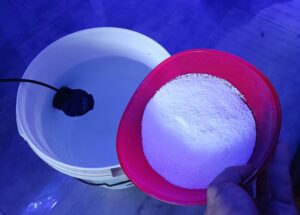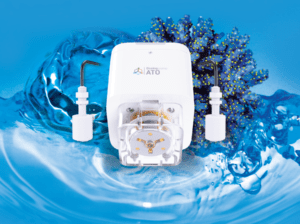Table of Contents
The composition of seawater is crucial information for a marine aquarist, without which achieving success in aquarium management is impossible. It is known that when setting up an aquarium, we try to fill it with brine that replicates the composition of natural seawater. To create this brine, sea salt is usually dissolved in water. Water is also needed once the aquarium is operational, as over time water evaporates and must be replenished with fresh water (non-sea water). Many marine aquarists strongly advise against using tap water, citing its potential contaminants and inappropriate chemical composition. Nevertheless, there is also a group of people who consider using tap water in their aquariums under certain conditions and after proper preparation. After reading this article, it will be easier for you to choose the right solution for your aquarium.
Why is water needed?
Water is not only the living environment for fish, corals, and other marine organisms but also a carrier of nutrients, minerals, and oxygen. Properly prepared water ensures stable conditions. Without the right water, there is no chance for a healthy marine aquarium. Where we use water:
- Preparing brine using sea salt – involves dissolving a properly composed mixture of sea salt in clean water.

- Replenishing evaporated water, also known as “topping up” – over time, water in a marine aquarium naturally evaporates, leaving salts and minerals. To maintain a constant water level and appropriate salinity, it is necessary to regularly replenish the lost water with a “top-up”. Regular topping up is crucial for maintaining stable conditions in the aquarium and the health of its residents.

What is the best water for a marine aquarium?
Choosing the right water for a marine aquarium is key to the health of marine animals. In the article, we will consider 3 possibilities:
- RO/DI water (reverse osmosis/deionization water);
- distilled water;
- tap water.
The best option for most aquarists is to use an RO/DI system. Such a system provides full control over water quality and minimizes the risk of introducing harmful contaminants into the aquarium. It effectively removes almost all contaminants, such as chlorine, chloramines, heavy metals, and other harmful substances. As a result, you get pure water, which is the ideal starting point for preparing brine.
If an RO/DI system is beyond financial reach, distilled water is a good alternative. The distillation process removes most contaminants, but it does not eliminate all dissolved gases (e.g. chlorine) and some volatile chemicals.
Alternatively, tap water can be used as an alternative to distilled water or RO/DI systems, but it requires special attention and appropriate preparation. Given the variability of its composition depending on the season, it is a somewhat risky move in marine aquaria.
Below you will find a table comparing the three types of water most commonly used in marine aquaria. The criteria for evaluation are: availability, investment cost, operating cost, contamination, chemical composition.
TAP WATER | DISTILLED WATER | RO/DI WATER | |
Availability | readily available | easily accessible | available |
Investment Cost | no cost | no cost | significant cost depending on the size of the system installed |
Operating Cost | dependent on municipal water rates | dependent on availability and prices in stores | dependent on municipal water rates and prices for consumables (filters, activated carbon, and resin) |
Contaminants | contains chlorine, chloramines, heavy metals, and other contaminants | may have inappropriate chemical parameters such as pH, water hardness | free from contaminants |
Chemical Composition | variable | usually constant | constant |
Analysis of Tap Water Using ICP-OES
Tap water contains various chemical substances that can vary depending on the region, water source, treatment processes, and seasonal and environmental conditions. Typical variable components include:
- Heavy metals (e.g. copper, lead, zinc);
- Minerals (e.g. calcium, magnesium);
- Chemicals used in water treatment (e.g. chlorine, chloramine);
- Organic contaminants (e.g. pesticides, organic compounds).
Variability and its consequences in marine aquaria:
- Stress and diseases in fish and other marine animals;
- Disruption of biological processes;
- Contaminants: The presence of heavy metals and other contaminants can have toxic effects on marine organisms.
Let’s move from theory to practice. We analyzed the chemical composition of tap water from various cities and their districts using the ICP-OES (Inductively Coupled Plasma Optical Emission Spectroscopy) technique. This analysis allowed us to accurately assess the concentrations of various elements in water samples. The results clearly show how variable the composition of tap water is in different locations. There is no doubt that the variability of tap water composition poses a real threat to marine animals.

If you are interested in using tap water, remember that due to the variability in the composition of tap water, it should be regularly tested and monitored. Sometimes it needs to be treated before it can be added to the aquarium.
Summary
The ideal water for marine aquaria is water prepared using the RO/DI system (reverse osmosis with deionization). This system guarantees the highest purity of water and allows for precise adjustment of its parameters to meet the needs of the aquarium’s inhabitants, which is one of the key aspects of our hobby. If an RO/DI system is financially out of reach, distilled water is a good alternative, although it requires additional work in mineralization. Municipal water, commonly called tap water, is the least used in marine aquaria due to the variability of its composition. It may contain chlorine, chloramines, heavy metals, and other contaminants that are harmful to marine organisms. If you decide to use it, proper preparation and conditioning are necessary. Regular testing of water parameters, such as pH, hardness, levels of nitrates and phosphates, and maintaining them at a constant, optimal level, will ensure a healthy and stable environment for the fish and corals in your aquarium.
The final choice of water is up to the marine aquarist.
About author

Magdalena Metzler
Privately, I am a mother and a lover of nature and sport. My main interest is quantum chemistry, which hides a whole lot of unsolved mysteries and connections, which is extremely exciting from a scientific point of view.
In my scientific career, I have conducted international projects focused on innovative solutions for many branches of business, e.g. automotive, construction, and now, of course, marine aquaristics.
Working at Reef Factory gave me a passion for marine aquaristics, which I can develop every day, building a chemistry department and creating products that will help aquarists take care of tanks and ensure the highest safety of animals. One of the most exciting memories of working at Reef Factory is the commissioning of the ICP-OES spectrometer, which analyzes the elemental composition of seawater. The method of analysis in ICP is based on an analytical technique, which is a combination of my passion for quantum chemistry and marine aquaristics.
I hope you find my articles on ReefPedia interesting and helpful! Happy reading :))



